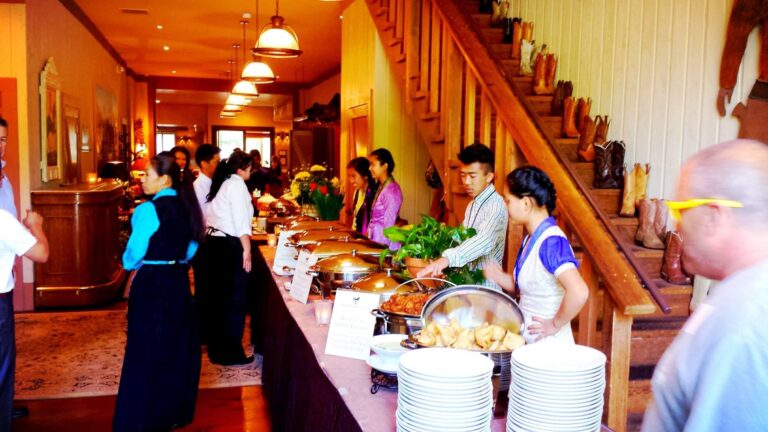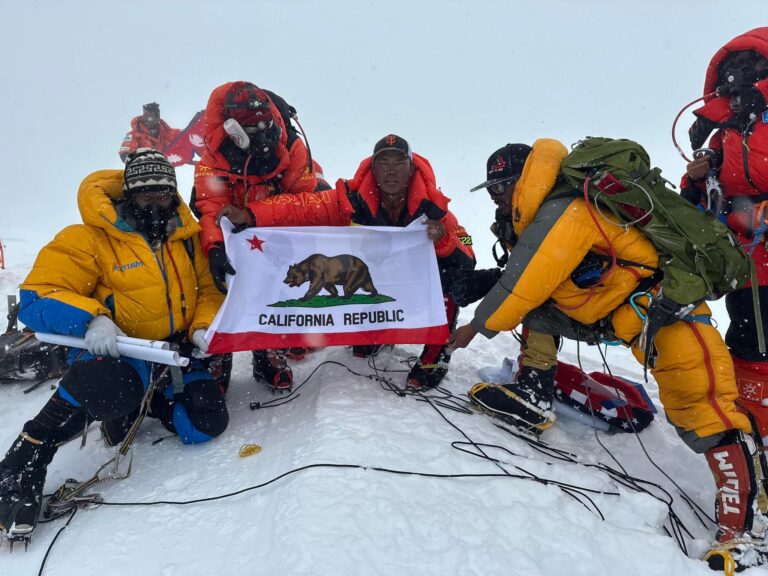༄༅། ཧི་མ་ལ་ཡ་ཤར་པ་སྐྱིད་སྡུག
"Preserving Heritage, Uniting Community."

About HSC
The Himalayan Sherpa Club of Sonoma is a non-profit, non-political organization, officially established in January 2011 under California state law. It is also recognized as a 501(c)(3) tax-exempt charitable organization by the IRS.
Our mission is to preserve and promote Sherpa culture, heritage, and values. We are deeply committed to fostering a strong, united, and thriving Sherpa community in the North Bay Area of California.
In addition, we strive to celebrate our unique cultural identity through community events, cultural programs, and ongoing outreach efforts. By encouraging cultural pride and unity, we aim to keep our Sherpa traditions alive for future generations.
What the Media Says About Us
Celebrate With Us
“Join us in celebrating our rich traditions and vibrant community through our annual and special events. Whether it’s sports, cultural gatherings, or festive celebrations, we welcome everyone to be part of the experience!”
Upcoming Events
“Stay updated on our upcoming events — mark your calendar and don’t miss out!”
Get In Touch
Feel free to reach out to us with any questions or suggestions. We look forward to hearing from you!
FAQs
The Himalayan Sherpa Club was established in 2011 to unite Sherpas living in and around Sonoma County. Its mission is to preserve and promote Sherpa culture abroad, educate younger generations about their heritage, and collaborate with other organizations on community-based events.
Our main goal is to preserve and promote Sherpa culture and establish a united and prosperous community with a unique and rich cultural heritage, and to strengthen the Sherpa community living in the North Bay Areas.
To become a member of HSC, you must be of Nepalese origin, reside in Sonoma County, and be willing to volunteer for the organization whenever available. Membership is entirely based on voluntary contributions.Please fill this form and submit.
As a member of HSC, you are welcome to participate in all events organized by the club. Since membership is entirely voluntary, your involvement depends on your availability and willingness to contribute.
You can directly email us through the contact us page in our website or call us in the given number in the same page.
HSC does not have an official office yet. However, you can reach out to any of our executive members for information and assistance.
The Sherpa are one of the ethnic groups native to the most mountainous regions of Nepal, Tingri County in the Tibet Autonomous Region and the Himalayas. The term sherpa or sherwa derive from the Sherpa language words ཤར shar (“east”) and པ pa (“people”), which refer to their geographical origin of eastern Tibet.
Most Sherpa people live in the eastern regions of Nepal and Tingri County, though some live farther west in the Rolwaling Valley, Bigu and in the Helambu region north of Kathmandu, Nepal. Sherpas establish gompas where they practice their religious traditions. Tengboche was the first celibate monastery in Solu-Khumbu. Sherpa people also live in Tingri County, Bhutan, and the Indian states of Sikkim and the northern portion of West Bengal, specifically the district of Darjeeling. The Sherpa language belongs to the south branch of the Tibeto-Burman languages, mixed with Eastern Tibet (Khamba) and central Tibetan dialects. However, this language is separate from Lhasa Tibetan and unintelligible to Lhasa speakers.
Chronology Of Sherpa History
(Most dates are approximate)
- 1480 Sherpas originaly came from Kham/Tibet
- 1533 Sherpas cross himalayas and settle in Khumbu area
- 1553 Settlement of Solu
- 1667 Founding of Pangboche monestery
- 1667-77 Founding of monestery at Thami and Rimijung
- 1720 Founding of Zhung monestery
- 1831 Founding of Khumjung monestery
- 1850 Birth of Karma, the senior founder of Tengboche monastery
- 1856 Birth if Sangye, Karma’s younger brother and the sole founder of Chiwang monastery
- 1885 Birth of Kusang, a Tengboche monestery sponsor
- 1905 Founding of Nauje/Namche monestery
- 1916 Founding of Tengboche monastery
- 1923 Founding of Chiwong monastery
- 1925 Founding of Debuche nunnery, near Tengboche
- 1953 Tenzing Norgay Sherpa and Sir Edmund Hillary became the first persons to summit Mt. Everest
Even though all Sherpas share the same last name, they are distinguished by different clans, known as Roo. These clans determine whether individuals are related or not.
Roo, a Sherpa word meaning bones, is inherited through the male lineage. This means a person’s clan membership is determined by their father’s lineage.
Origin of Sherpa Clans
Four main clans originally migrated from Kham, eastern Tibet, to the Solu-Khumbu region:
Thimmi
Tharktho
Chawa
Lama
Over time, these clans branched into several brother-clans. Continuous migration has also introduced new clans to the region. Most Sherpa clans arrived in Khumbu via the Nangpa La pass, except for the Thimmi clan, which came through Rongshar and Rolwaling.
Expansion of Clans
Paldorje Clan gave rise to: Salakha, Dhag Shingto, Kambache, and Goparma.
Tharktho Clan (originally called Michen-topa in Kham) gave rise to: Gole, Gorcha, Phinasa, Pangkarma, Sharpa Penagpa, and Shari-toda.
Lama Clan gave rise to: Serwa and Gombawa.
Chawa Clan remained a single clan, originating from a lama and his family who migrated from Tibet about 360 years ago.
Other Clans in Khumbu
Additional clans arrived in Khumbu more recently, including Chhusharwa, Murmi-tsho, Lhukpa, Nawa, Shangu, Jonagpa, and Mendewa. Over time, people from different ethnic backgrounds—such as Newars, Chetris, Tamangs, and Kamis (blacksmiths)—also migrated from lower valleys of Nepal. Despite their diverse origins and religious beliefs, many of these settlers still pray to Buddha while living in Khumbu.
Religious Practices & Marriage Customs
Each Sherpa clan has its own deity and distinct ways of performing pujas (rituals). According to Sherpa customs, marriage within the same clan or brother-clans is strictly forbidden.
Deities Worshipped by Different Clans:
Upper Khumbu Sherpas pray to Gonpo Maning, a deity that can be either male or female.
Solu Sherpas worship Gonpo Chagshipa, a four-armed deity.
Specific Clan Deities:
Paldorje → Bhari Latsen
Nawa → Thrawache
Chhusharwa → Lobuche
Sherwa → Arkamche
Tharktho → Lung-kyung Bhari
Mendewa → Kharte Gyalu
Chawa → Chagpe-chagkung Karpo
Gorcha → Zhamte Chen
Additionally, clans in the Shorung region have their own unique deities, reflecting the diverse ways in which Sherpa clans perform their pujas.
JOIN US
Join us in building a strong and connected community, where we share our values, support one another, and preserve our rich cultural heritage. By giving and receiving, we create deeper bonds, celebrate our traditions, and strengthen our collective spirit. Together, We Thrive!
PLEASE SUPPORT US
Your contribution will help us sustain our initiatives, support ongoing projects, and bring us closer to realizing our dream of building a Himalayan Community Hall. We sincerely appreciate your generosity and support.



